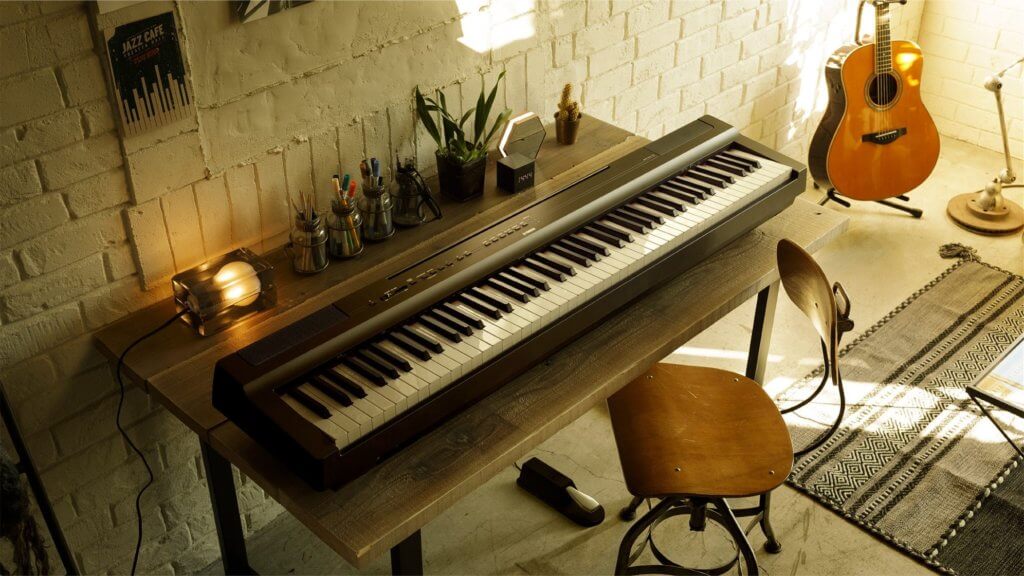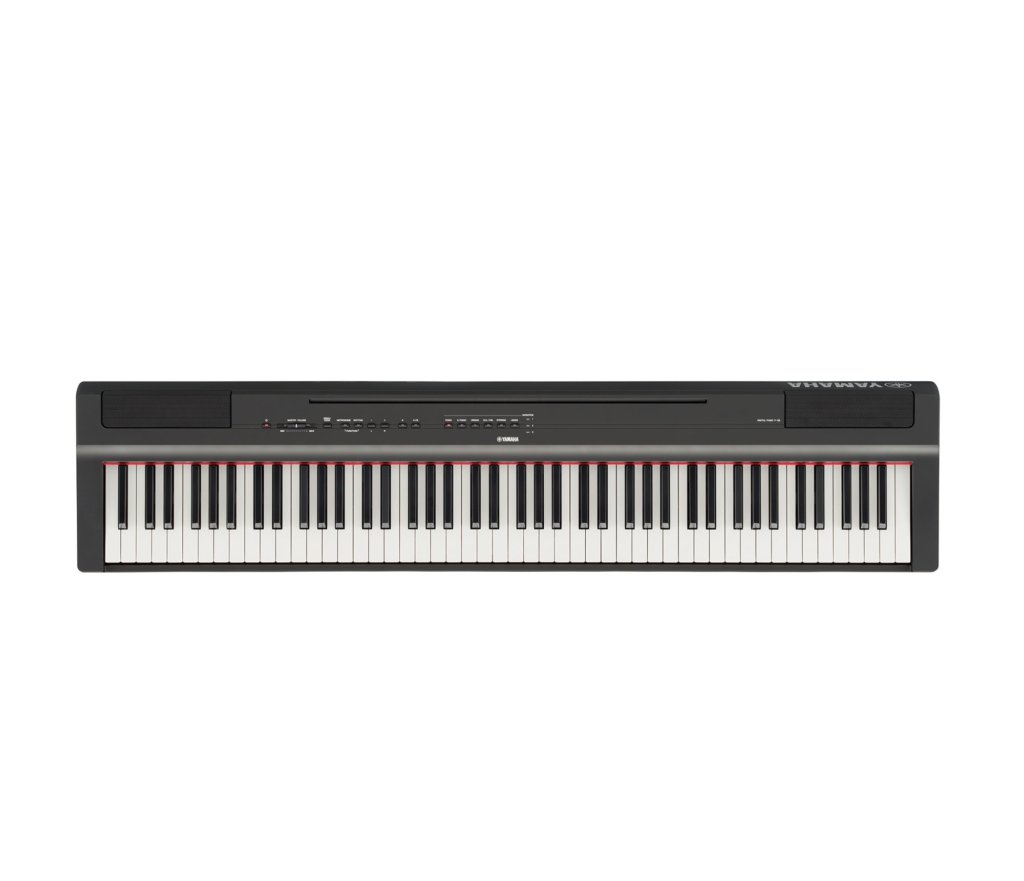We liked the Casio digital piano we review elsewhere in this month’s issue, don’t get us wrong. But we also had this new Yamaha P-125 (the BK standing for ‘black’) in the office at the same time, and for about $150 less than the PX-S3000, we enjoyed this one a bit more. The action felt better and more like what we’re used to in a digital stage piano (no odd texturing), the built-in speakers sounded a bit richer and fuller, and the sounds were as convincing, if not more, than the same modes during an A/B test with the Casio.
So, let’s dig in. The Casio is a bit sleeker looking, especially with its light up touch controls that appear when you power it on. But the Yamaha’s menu-less navigation is a bit more intuitive and natural for just finding the right piano sound, as quickly as possible. Press the ‘Piano’ button and you’re immediately in grand piano mode.

No fuss, no muss. And it sounds incredible. Press again, and you’ll get additional variations on each sound (three for each of the on-board pianos, electric pianos, organs, strings, etc.). It’s just dead-on simple to use, and get to the sound you want instantly. On dark stages, or when studio time is at a premium, this is a huge plus. Your fingers will know what to do, without having to see what’s going on.
Speaking of the sounds, the built-in acoustic pianos tones are wonderfully realistic. I must admit, I had a little help in this review from my wife, a Berklee-trained pianist who is an adamant acoustic piano player, and rarely indulges in the digital world. But even she couldn’t stop playing the P-125, commenting on its realistic sound and feel. The 88 keys feel great, perfectly weighted and natural, and an easy transition from the real-deal to the digital world. We happen to have a baby grand here at Performer HQ, so we can A/B test pretty easily when it comes to feel, sound and playability. The Yamaha nails it. And it does the same with electric piano, organs and strings. This is a very versatile instrument, that has a surprising number of useful sound variations under the hood.

Construction wise, it’s a bit utilitarian in appearance, but that’s fine. It’s rock solid, and should hold up to the rigors of the road (given you travel with it in a case) and should slot in just fine to most studio environments. It does have some built-in rhythms that we didn’t find all that interesting, but they’re there nonetheless. And of course, you have standard stereo outs and USB connectivity for the studio. Split and duo modes round things out, making this the perfect tool for the accompanist who also has to comp and lead at the same time. Stings in one hand, bass in the other, see which one…well, you get the idea.
An absolutely inspiring instrument, a joy to play and perform with.
PROS:
excellent feel, built quality and sound reproduction.
CONS:
none.
STREET PRICE:
$649
